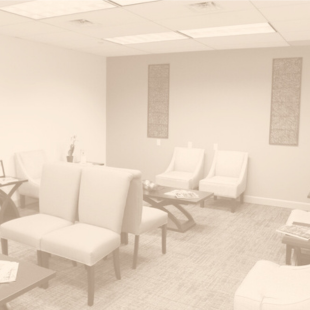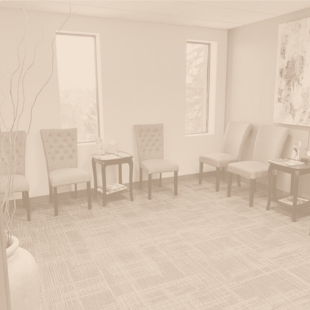Lower Body Lift
Procedure Process
& Ideal Candidates
Massive weight loss, whether due to a surgical procedure or exercise, has allowed many people to gain control of their health. However, weight loss patients can experience other problems secondary to the weight loss such as skin that has been overstretched and has lost elasticity. This thin, excessive skin can cause rashes, infections and can hinder continued exercise programs. Clothing options may also be a problem as a patient may still need to wear larger sizes to help hide the excess skin.
The most commonly affected areas with weight loss include the abdomen, breasts, buttocks, arm, thighs, and neck. With larger amounts of weight loss, the skin may have been overstretched for a long period of time, and is now incapable of regaining its form so it can only be corrected with surgery. There are several treatment options available for correcting excessive skin on the abdominal wall: panniculectomy, abdominoplasty, extended abdominoplasty, and the lower body lift. The ideal candidate is a healthy individual whose weight loss success has been maintained for at least 6 months.
What To Consider
Weight Loss
Candidates
Affected Areas
Schedule Your Lower Body Lift Consultation
During your consultation, Dr. Antimarino will walk you through a series of questions to determine your concerns, goals and expectations. Dr. Antimarino will discuss with you any medical conditions you may have or treatments you are going through, what medications you may be taking, and any previous surgeries. Be prepared to discuss the outcomes of a lower body lift procedure and have the doctor take photos of your midsection for a more accurate evaluation.
Pre-Op Care
Depending upon a patient’s age and medical condition there may be preoperative laboratory testing required. This will need to be completed within 2 weeks of surgery and is typically covered by the patient’s insurance. Patients are asked to maintain their usual activity level and body weight from the time of consultation to their surgical date. Patients are required to stop smoking, vaping, and the use of nicotine patches, gum and marijuana one month prior to surgery and a minimum of one month post-surgery. Patients are also required to stop using weight loss medications 2 weeks prior to their surgery. Surgery may be canceled if guidelines are not followed.
Frequently Asked Questions
What is a lower body lift?
A lower body lift is essentially removing the excess skin on the abdominal wall, hips, and above the buttocks. It also elevates the position of the upper, outer thighs and buttocks to a more normal anatomical position.
What are the benefits of a lower body lift?
The benefit of a lower body list is that it removes excess skin on the abdomen and hips while restoring the position of the buttocks.
Will there be visible scarring after a lower body lift?
There will definitely be scarring that will be around the entire lower abdomen and hips but will be placed below most clothing levels so they are not visible when dressed.
How long do the results of a lower body lift last?
Maintaining a healthy diet, exercise, and current weight, the body lift can last for many years.
What is the difference between a lower body lift and an upper body lift?
The lower body lift addresses the abdomen, hips, and buttocks, while the upper body lift addresses the breasts and excess skin along the sides of the breasts and upper back.
Can I combine a lower body lift with other cosmetic procedures?
Depending upon your consultation and the other areas of concern, it may be possible to combine a lower body lift with another procedure.
Do I need to make any lifestyle changes before or after a lower body lift?
It is recommended that patients maintain their current body weight, exercise routine, and healthy diet.
Testimonials
What Our Patients Are Saying
Dr. Antimarino sculpted what my previous surgeon failed to do. Before my explicit details he knew exactly what needed to be modified. He is patient and always informative. I never felt rushed. He took the time to understand my needs. I have total confidence in his surgical skills as well as his technical knowledge. I would recommend Dr. Antimarino without reservation. This is reflected after consulting and meeting several other surgeons. None came close to the level of confidence he renders.
RATEMD
Dr. Antimarino is extremely conscientious of his patients. He is very informative, personable, and accessible! I have always been able to easily reach any staff member of Bellissimo, including Dr. Antimarino himself, with any questions. He has a very calm and unhurried approach. I did not feel like I was a “number” being rushed through, but rather treated as an individual and had my expectations of surgery understood. His surgical ability is top notch, and I couldn’t be happier with my result.
REALSELF
Dr. Antimarino is extremely patient and compassionate. He truly listens to each and every concern while educating his patients. Dr. Antimarino’s expertise will give you the confidence in him. He strives to ensure that each patient is comfortable from start to finish and even after the procedure—absolutely above and beyond—something other surgeons should be doing for their patients!
Surgery & Post-Op Care
A Body Lift is an outpatient procedure and is unique to each individual patient. The procedure lasts approximately 3-4 hours and is done under general anesthesia in an accredited outpatient surgical facility. The patient is discharged with a dressing under an abdominal binder that does not need to be changed by the patient. It will be changed at the first post operative appointment. There will be 4 drains that will be emptied by the patient or care provider twice a day and the output is recorded and reported to the provider at the follow up appointment. In most cases, 3 drains will be removed at the first appointment. Post-operatively, the patient may experience some mild swelling and minimal pain at the surgical site. On average, patients may return to work in about 2-3 weeks but may begin working from home if possible within a week. Exercises generally resume after 3-4 weeks.
Related Procedures
Our Locations

Shadyside
5301 FIFTH AVENUE, SUITE A,
PITTSBURGH, PA 15232
GET DIRECTIONS
Fri: 8 am – 4:00 pm

Monroeville
117 FOX PLAN ROAD, SUITE #300,
MONROEVILLE, PA 15146
GET DIRECTIONS
Fri: 8 am – 4:00 pm

